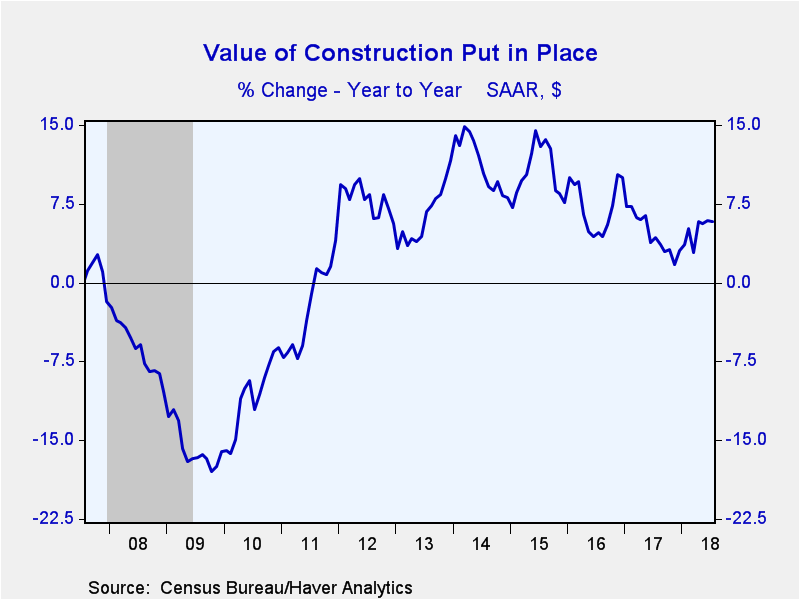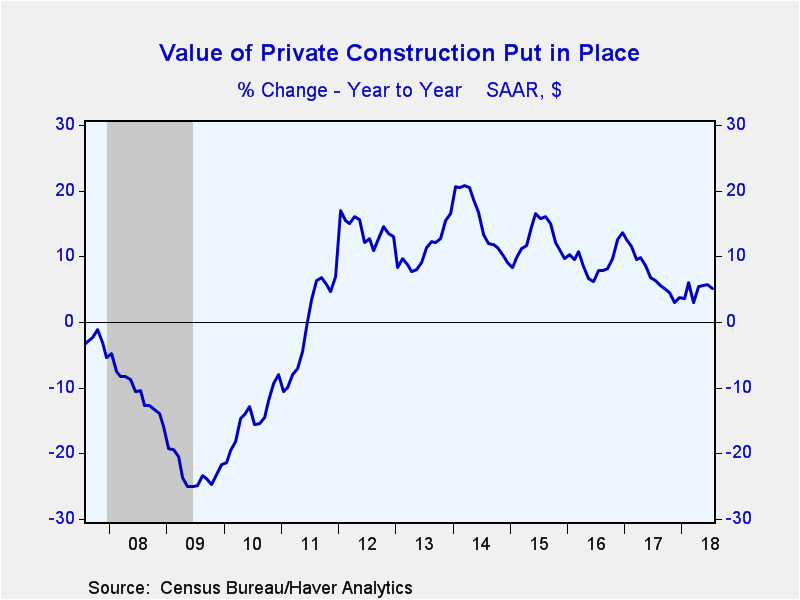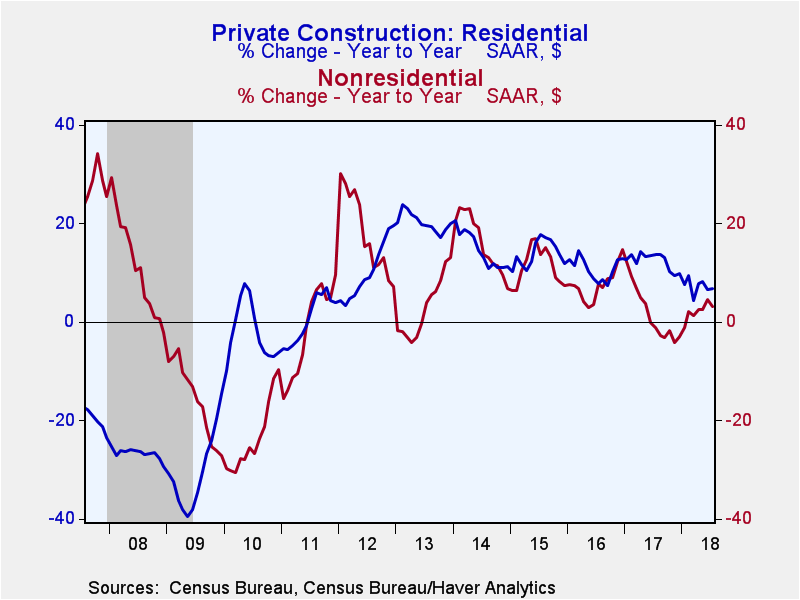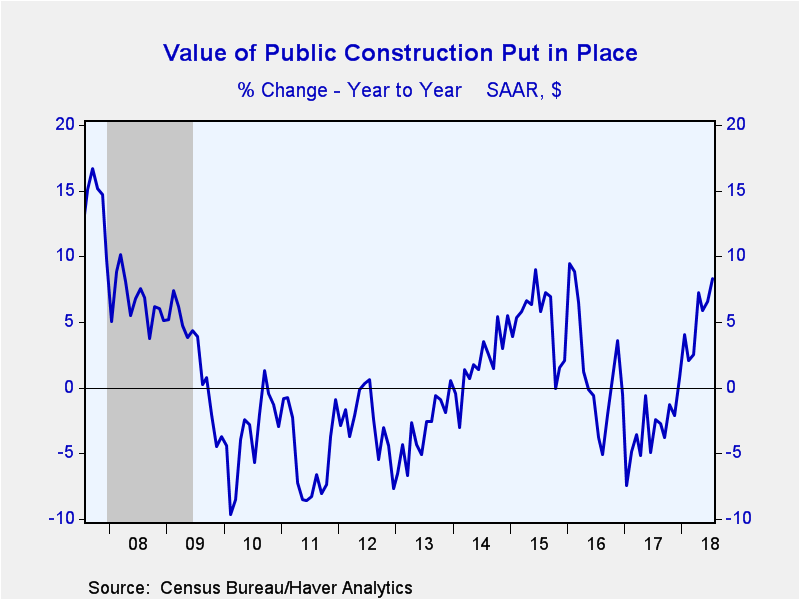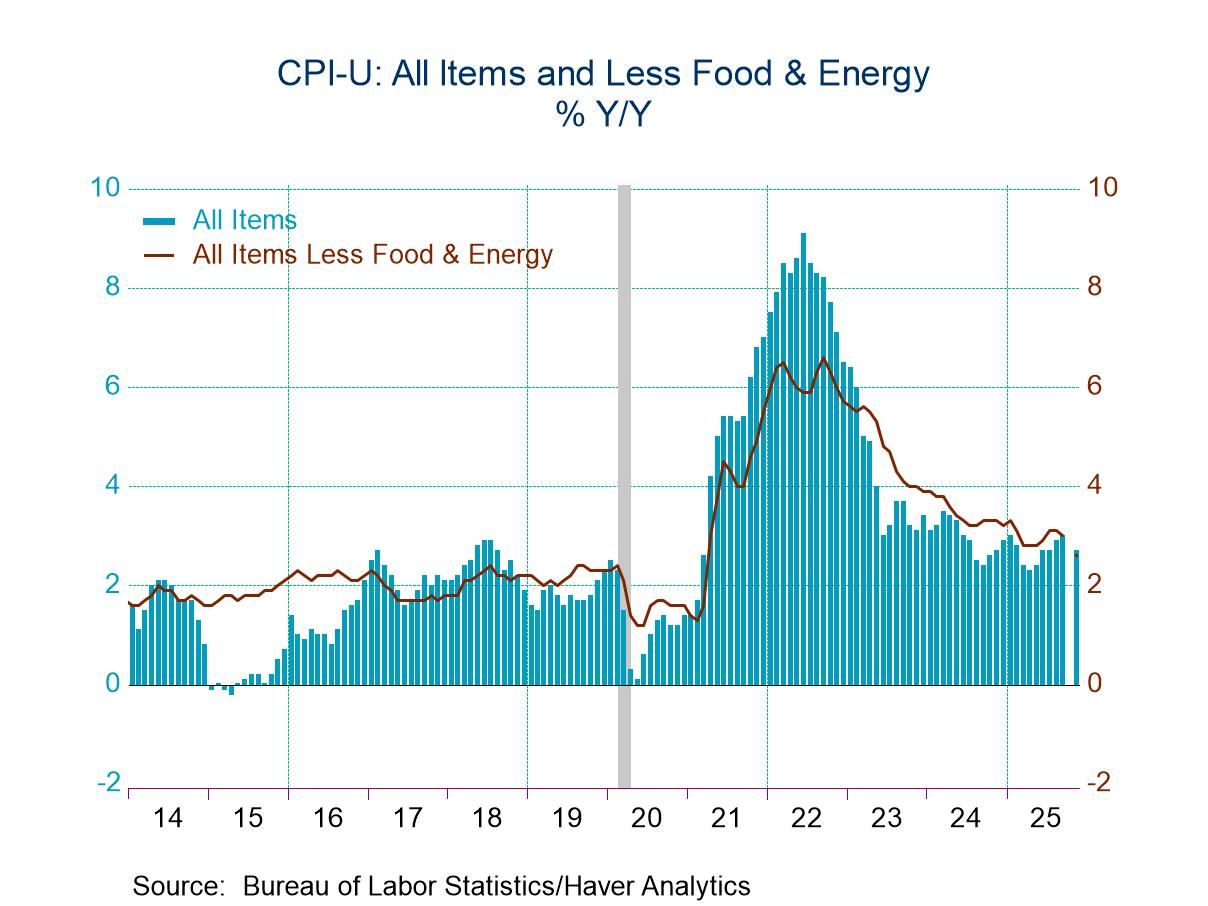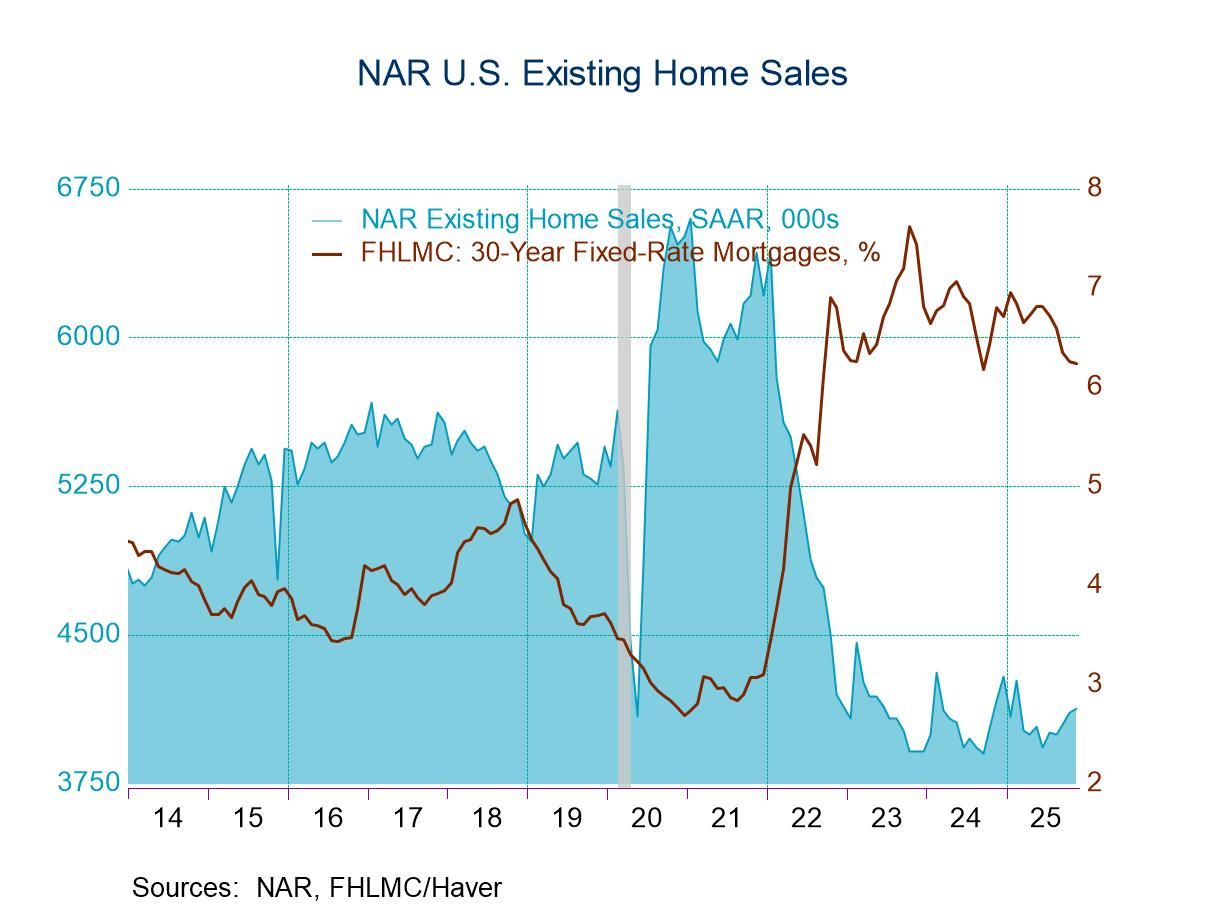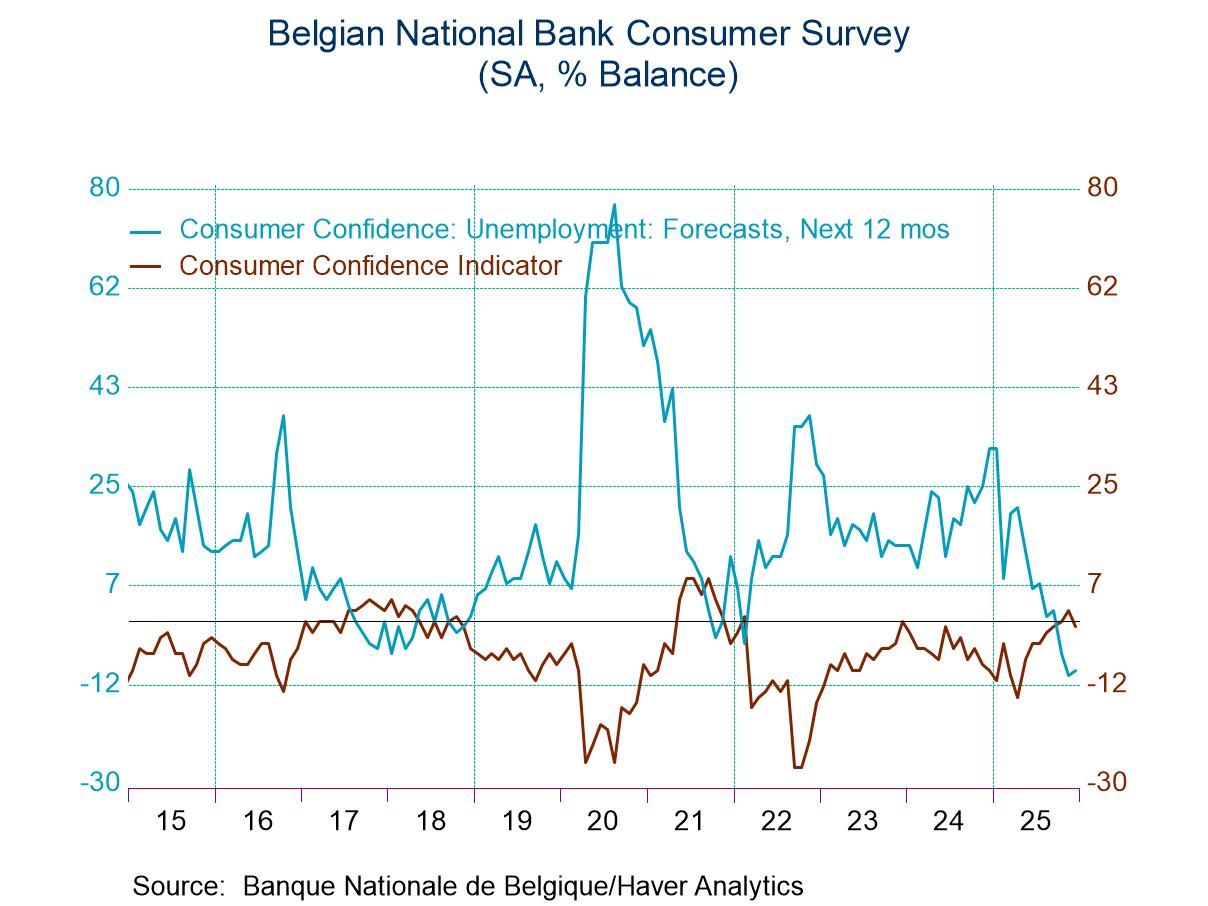 Global| Sep 04 2018
Global| Sep 04 2018U.S. Construction Spending Unexpectedly Weak in July
by:Tom Moeller
|in:Economy in Brief
Summary
Forward momentum in building activity continues to slow. The value of construction put-in-place improved 0.1% (5.8% y/y) during July following a 0.8% decline in June, revised from -1.1%. A 0.4% increase was expected in the Action [...]
Forward momentum in building activity continues to slow. The value of construction put-in-place improved 0.1% (5.8% y/y) during July following a 0.8% decline in June, revised from -1.1%. A 0.4% increase was expected in the Action Economics Survey.
In the private sector, the slowdown has been pronounced. Activity eased 0.1% after a 0.5% June decline. The 5.1% y/y gain compares to 7.1% growth last year, a 9.2% increase in 2016 and double-digit growth during each of the prior four years.
Residential building activity increased 0.6% (6.6% y/y) during July after declines during the prior two months. Single-family construction fell 0.3% (+6.0% y/y) after declining in three of the prior four months. Multi-family construction fell 0.4% (+1.1% y/y) after a 2.4% drop. To the upside was home improvement activity, rising 2.1% (9.4% y/y). That gain, however, followed a string of declines.
Nonresidential construction in July fell 1.0% (+3.2% y/y) after a 0.1% uptick. The value of commercial building activity was off 3.4% (+0.5% y/y) after a 0.2% increase. Health care building declined 2.2% (-1.9% y/y), down for the fifth straight month. To the upside was the value of transportation building, increasing 2.7% (21.5% y/y) after a 3.7% increase. Factory sector construction increased 0.6% (-4.4% y/y) following a 1.5% rise.
Construction activity in the public sector increased 0.7% (8.3% y/y) in July after a 1.7% decline. Power facility construction strengthened 2.8% (12.1% y/y) as it followed an 8.3% decline. Highway and street building, which accounts for about one-third of nonresidential building, rose 0.4% (3.9% y/y) following a 1.5% decline. Commercial construction rose 0.7% (23.7% y/y) after a 5.8% jump. Weakening by 1.9% (+33.7% y/y) was office construction as it came after a 1.9% decline.
The construction spending figures, some of which date back to 1946 (e.g., public construction figures), are in Haver's USECON database and the expectations figure can be found in the AS1REPNA database.
| Construction Put in Place (SA, %) | Jul | Jun | May | Jul Y/Y | 2017 | 2016 | 2015 |
|---|---|---|---|---|---|---|---|
| Total | 0.1 | -0.8 | 0.7 | 5.8 | 4.5 | 7.0 | 10.7 |
| Private | -0.1 | -0.5 | 0.2 | 5.1 | 7.1 | 9.2 | 12.9 |
| Residential | 0.6 | -0.9 | -0.3 | 6.6 | 12.4 | 10.7 | 14.2 |
| Nonresidential | -1.0 | 0.1 | 0.7 | 3.2 | 1.3 | 7.7 | 11.5 |
| Public | 0.7 | -1.7 | 2.7 | 8.3 | -3.2 | 0.7 | 5.1 |
Tom Moeller
AuthorMore in Author Profile »Prior to joining Haver Analytics in 2000, Mr. Moeller worked as the Economist at Chancellor Capital Management from 1985 to 1999. There, he developed comprehensive economic forecasts and interpreted economic data for equity and fixed income portfolio managers. Also at Chancellor, Mr. Moeller worked as an equity analyst and was responsible for researching and rating companies in the economically sensitive automobile and housing industries for investment in Chancellor’s equity portfolio. Prior to joining Chancellor, Mr. Moeller was an Economist at Citibank from 1979 to 1984. He also analyzed pricing behavior in the metals industry for the Council on Wage and Price Stability in Washington, D.C. In 1999, Mr. Moeller received the award for most accurate forecast from the Forecasters' Club of New York. From 1990 to 1992 he was President of the New York Association for Business Economists. Mr. Moeller earned an M.B.A. in Finance from Fordham University, where he graduated in 1987. He holds a Bachelor of Arts in Economics from George Washington University.


